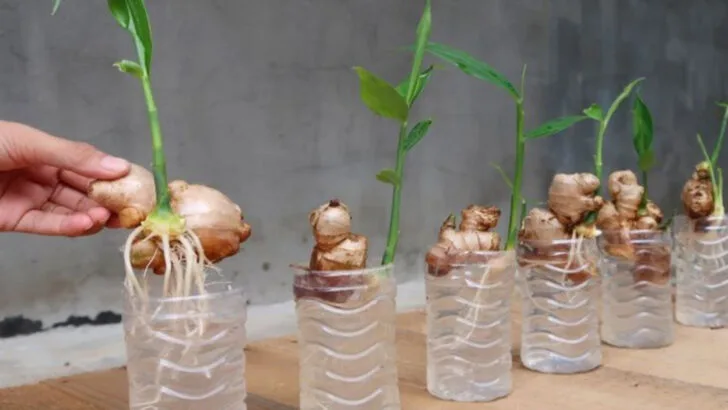Ever wondered if those kitchen scraps you usually toss could actually turn into thriving plants? With these 16 plants you can grow from kitchen scraps, you don’t need a green thumb or fancy gardening tools to start your own mini garden. It’s surprisingly easy, fun, and a great way to reduce waste while bringing fresh life into your home.
From regrowing onions to sprouting lettuce, these plants prove that even the smallest scraps have big potential. Whether you have a sunny windowsill or a cozy countertop, these easy-to-grow plants make gardening accessible to everyone—even beginners.
Give your kitchen a green makeover and enjoy watching your food scraps transform into lush, edible plants. It’s a simple, sustainable, and satisfying way to grow fresh produce right where you cook.
Green Onions
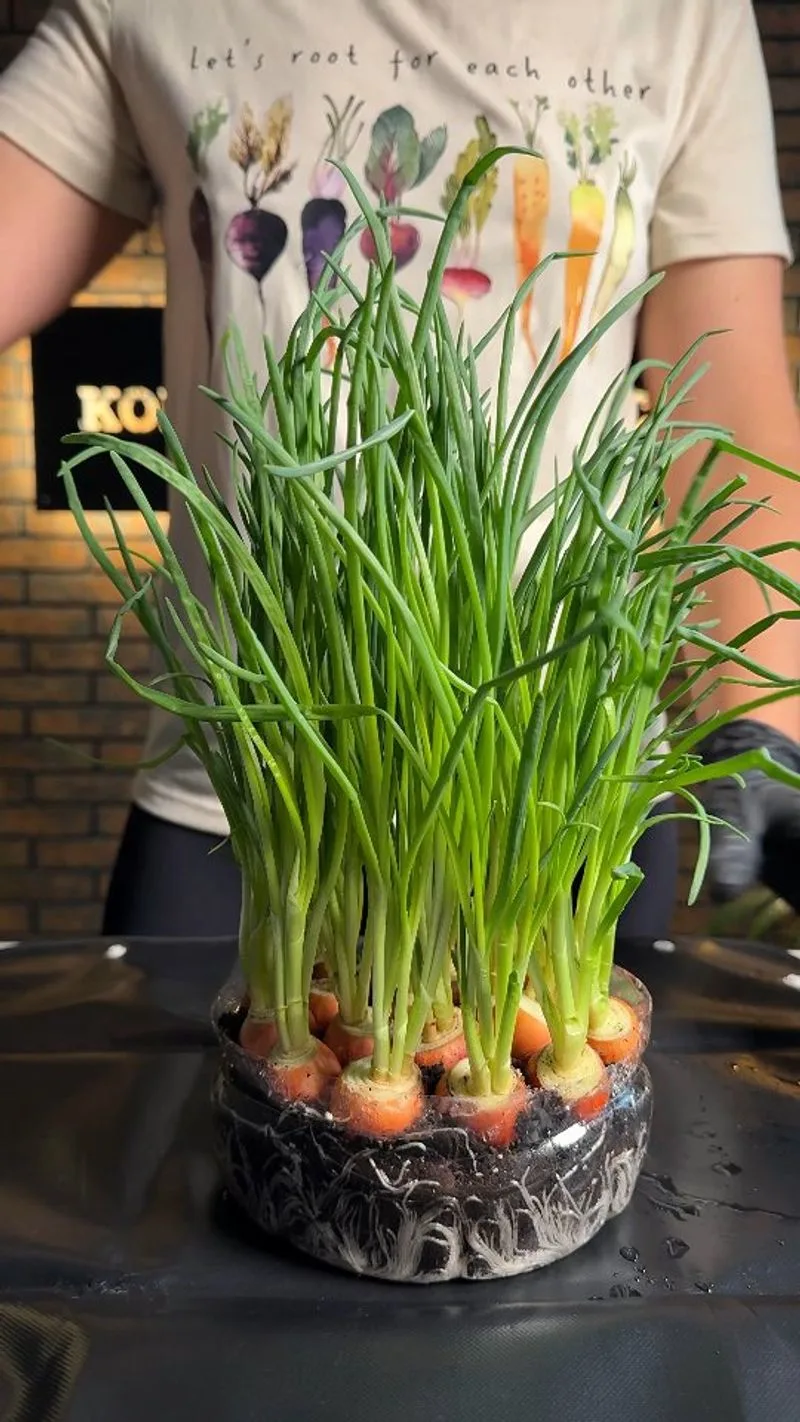
Imagine having a constant supply of fresh green onions right from your windowsill. Simply place the white ends with roots in a glass of water and watch them sprout new green stalks within days. It’s a kitchen miracle that adds a burst of flavor to any dish. Quick to regrow and easy to maintain, they’re perfect for those with limited space. Change the water every few days to keep them fresh. Their vibrant green color can brighten up any corner of your home.
Romaine Lettuce
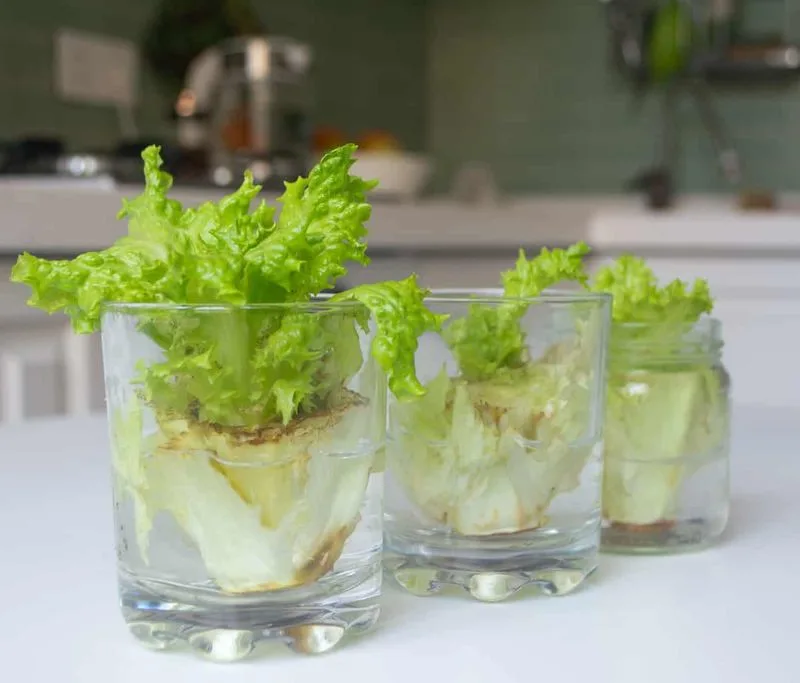
The core of romaine lettuce can become a centerpiece of your kitchen garden. Place the stump in a shallow dish of water, and in a week, new leaves will begin to emerge from the center. It’s fascinating to watch them unfold and grow bigger each day. Ideal for salads and sandwiches, this regrowth can be harvested again and again. Keep the dish near a sunny spot to boost its growth. This process is both educational and rewarding, especially for curious minds.
Celery
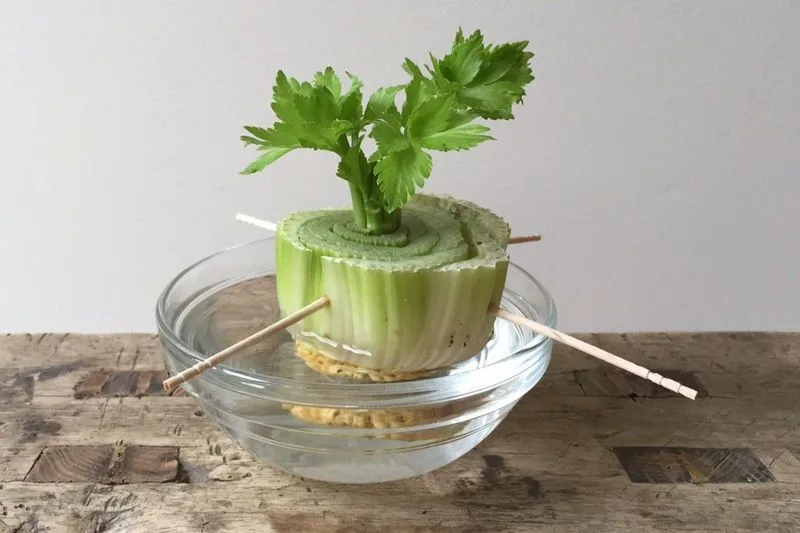
Celery’s crisp stalks can have a second life with minimal effort. Take the base of a used celery bunch and place it in a shallow bowl of water. Within a few days, new shoots will sprout from the center. It’s a delightful transformation that’s as healthy as it is fun to observe. Perfect for snacking or cooking, these fresh shoots are a versatile addition to your meals. Ensure plenty of sunlight for optimal growth. Watching the process is a satisfying way to engage with nature.
Carrot Tops
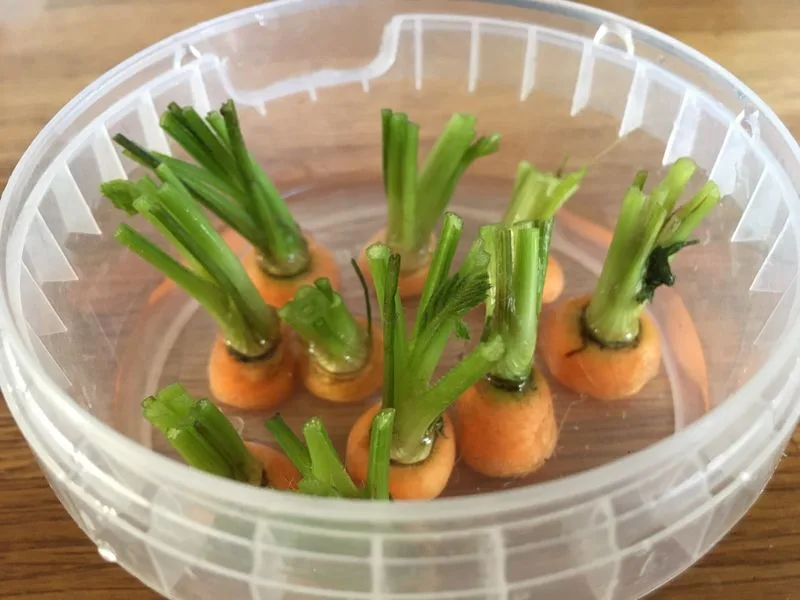
While the carrot root is commonly enjoyed, the tops can be a vibrant addition to your kitchen. Place a carrot top in a dish with a bit of water, and new greens will start to sprout. Though they won’t produce new carrots, the greens are edible and can be used as a garnish or in salads. This small-scale gardening project is perfect for children to explore plant growth. Change the water frequently and give them ample sunlight. It’s a simple way to bring greenery indoors.
Basil
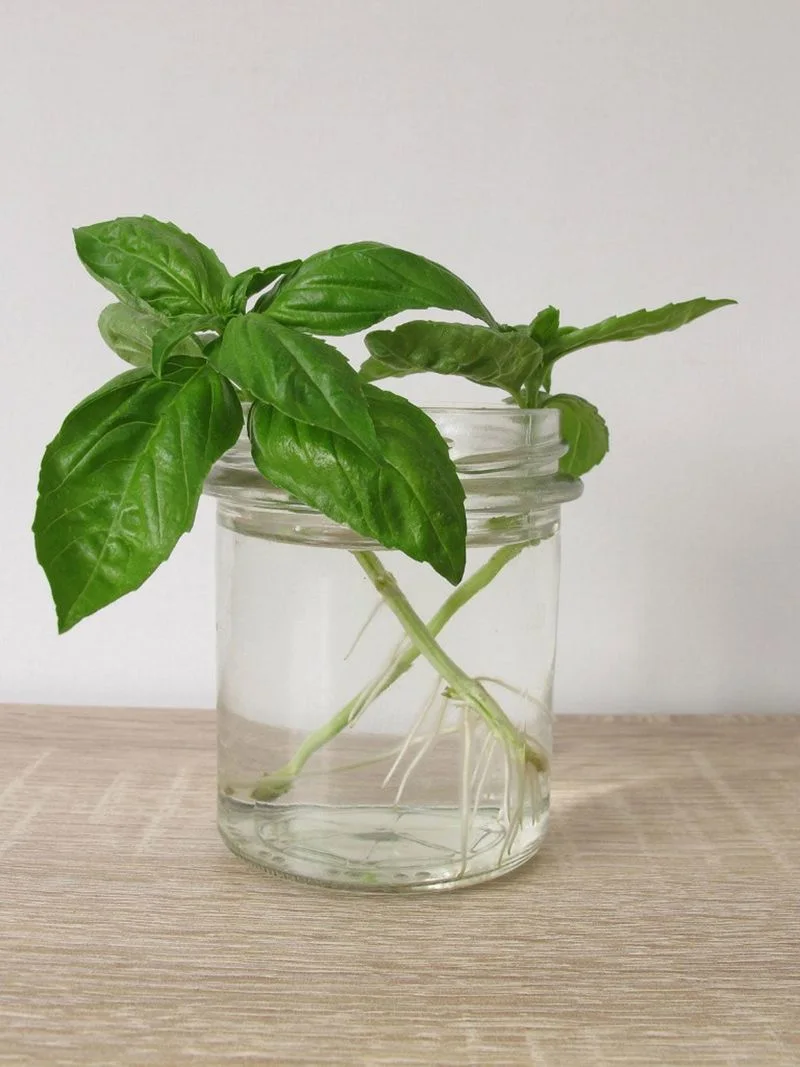
Basil brings a touch of aroma and flavor that’s hard to resist. Snip a few healthy cuttings and place them in water. With some patience, roots will develop, allowing you to plant them back into soil. This method keeps your basil supply constant, ready for pastas or pizzas. The fragrance alone is a sensory delight. Position them where they can soak up the sun. It’s an easy way to enjoy fresh herbs year-round, adding both taste and greenery to your space.
Potatoes
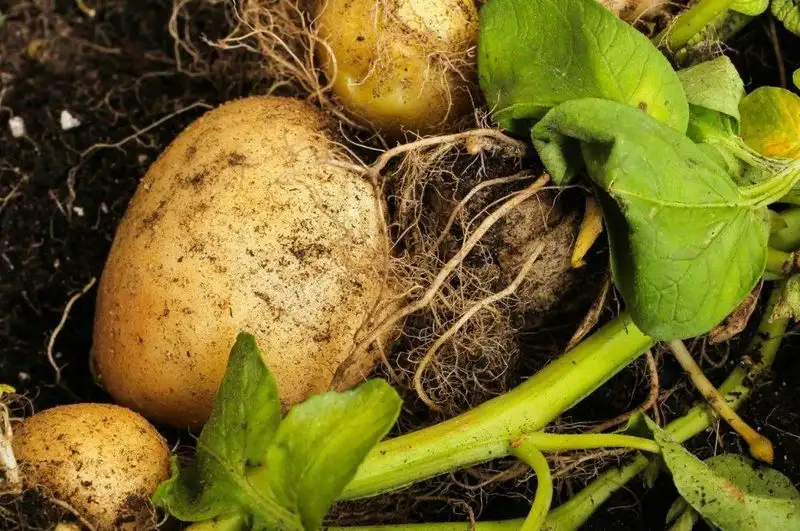
Don’t toss those sprouting potatoes! Plant them with the eyes facing up in a pot of soil and watch them grow into a new plant. This cycle can yield even more potatoes, making it a sustainable choice for your kitchen. They require little more than sunlight and occasional watering. Perfect for those who enjoy hearty home-cooked meals, as homegrown potatoes offer a unique taste. This project is a fun experiment for all ages, celebrating the magic of growth from scraps.
Ginger
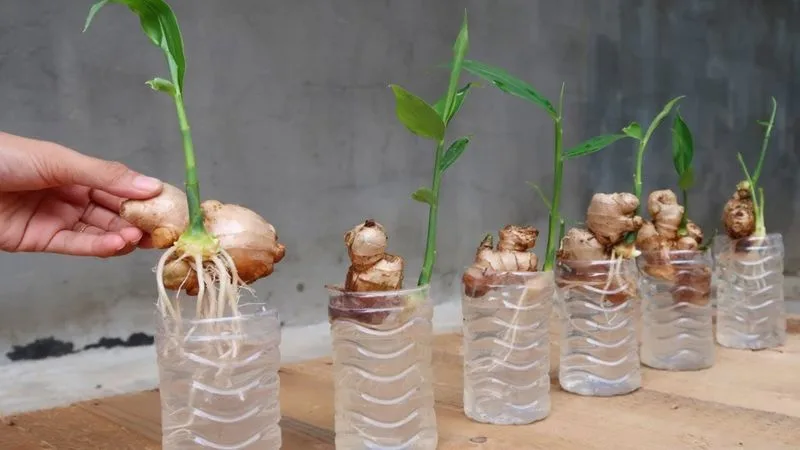
With its distinctive flavor and warmth, ginger can be grown from a simple piece of rhizome. Plant a section with visible buds in soil and wait for it to sprout. Over time, it will develop into a lush plant whose roots you can harvest. Ginger thrives in indirect sunlight and requires minimal care. This makes it an excellent candidate for indoor gardens. Its aromatic presence is not only appealing but also offers multiple culinary uses. Enjoy fresh ginger at your fingertips.
Garlic
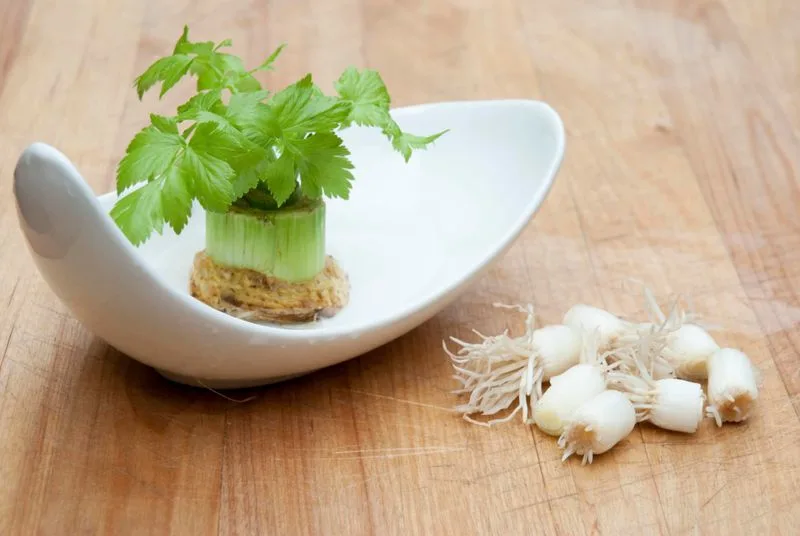
Garlic cloves can give life to new plants right on your windowsill. Plant a clove with the pointed end facing up in soil, and soon shoots will emerge. These shoots can be used fresh or left to mature into new bulbs. Perfect for enhancing dishes with a hint of freshness, homegrown garlic is both practical and rewarding. Ensure they receive plenty of sunlight. This project offers a continuous supply of flavor while being straightforward and satisfying to manage.
Sweet Potatoes
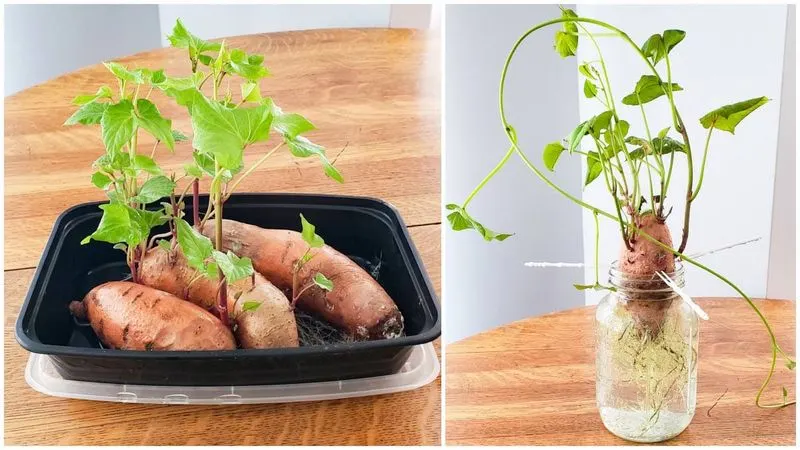
Suspend a sweet potato in water using toothpicks, and watch as it transforms into a vine. This method not only provides greenery but also a potential harvest. The vines can be planted in soil once they develop roots. Sweet potatoes thrive with little attention, making them ideal for novice gardeners. They offer a charming decorative element with their trailing vines. Place them in a sunny spot and enjoy the dual benefits of indoor beauty and edible rewards.
Pineapple
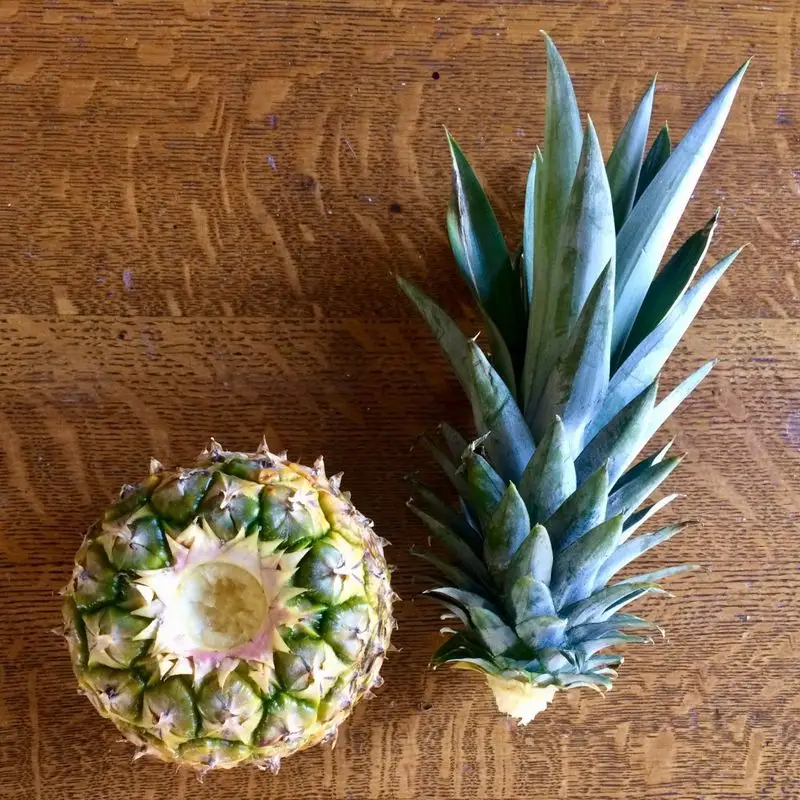
Pineapple tops can turn into a tropical plant with a bit of patience. Place the crown in water until roots form, then transplant it into soil. Though it takes time to fruit, the plant itself is a dramatic addition to any space, with its spiky leaves. It’s a fun and exotic project that can add a touch of the tropics to your home. With a sunny window and regular watering, this quirky plant stands as a testament to nature’s wonders.
Cabbage

The core of a cabbage can regrow with surprising ease. Place it in a shallow dish of water, and new leaves will begin to shoot up. This method is not only efficient but also a neat way to observe nature at work. The tender new leaves are perfect for soups or stir-fries. Keeping it near a window ensures it gets the light it needs. This simple setup can be a delightful learning experience, particularly for children interested in plant life.
Fennel
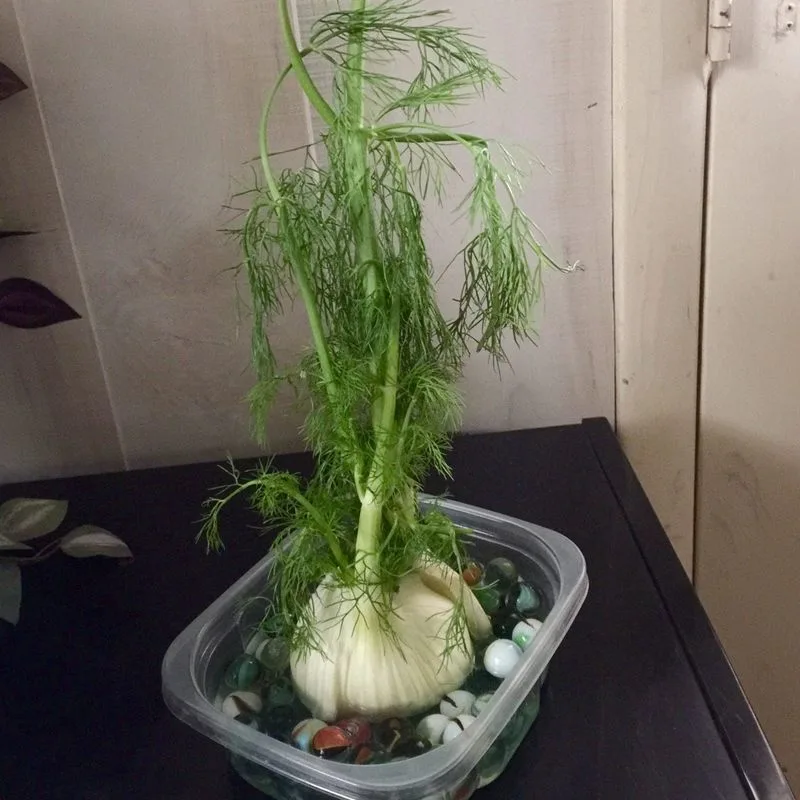
A fennel bulb can be the start of something new when placed in water. Watch as it produces fresh fronds from the center, ready to be used in salads or as a garnish. This project not only recycles kitchen waste but also brings a fragrant addition to your meals. With the right amount of sunlight, fennel regrows quickly and requires minimal attention. It’s an engaging way to bring a hint of gourmet into everyday cooking.
Leeks
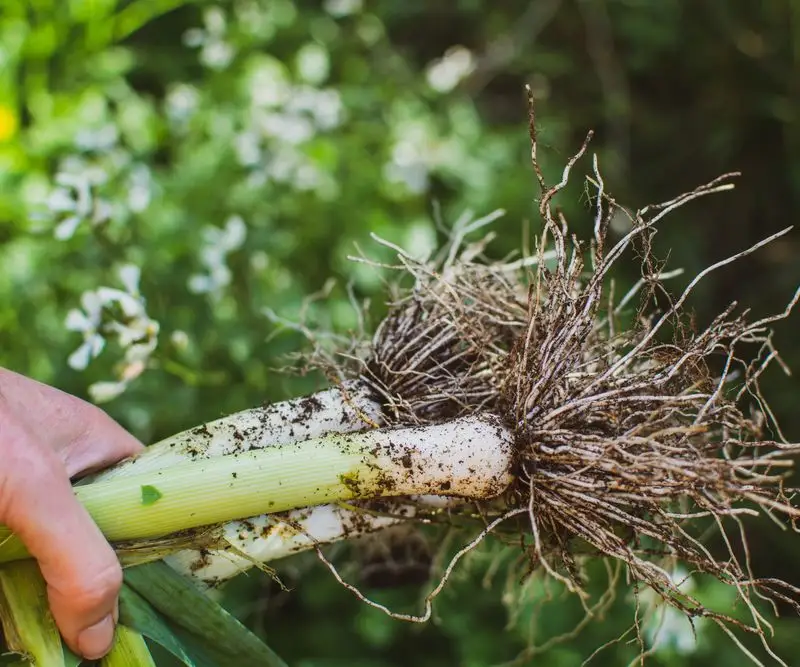
Leeks can continue to provide flavor long after their first use. Place the base in water and soon, fresh greens will appear. This gentle regrowth process is perfect for adding to soups and stews. Keep them near sunlight for best results. The simplicity of this project makes it accessible to all, turning what might be waste into a source of fresh ingredients. It’s an ongoing source of satisfaction and taste for the culinary enthusiast.
Turnip Greens
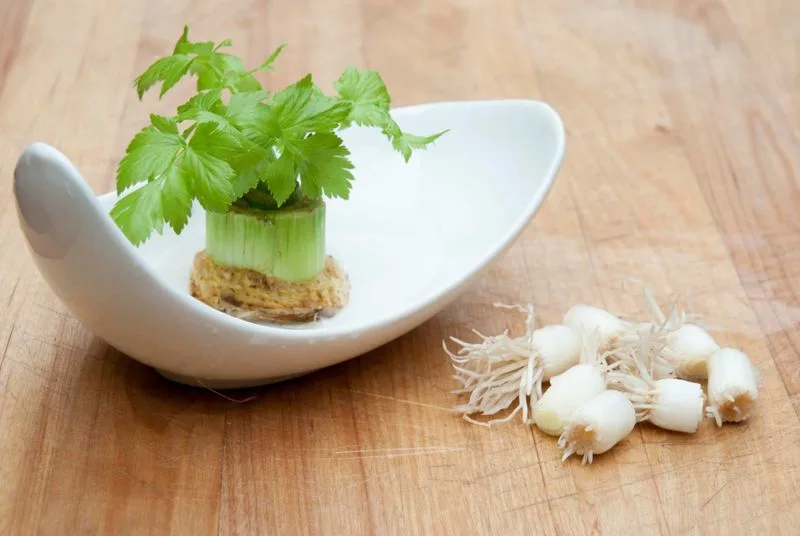
Turnip tops are more than just leftovers; they can sprout vibrant greens when placed in water. These greens bring a nutritious boost to salads and dishes. Observing the growth process is both educational and fulfilling. Change the water regularly and provide sunlight to see them thrive. This simple act of regrowth transforms scraps into a continuous supply of fresh greens. It’s a small sustainable act that can have a delicious impact on your table.
Mint
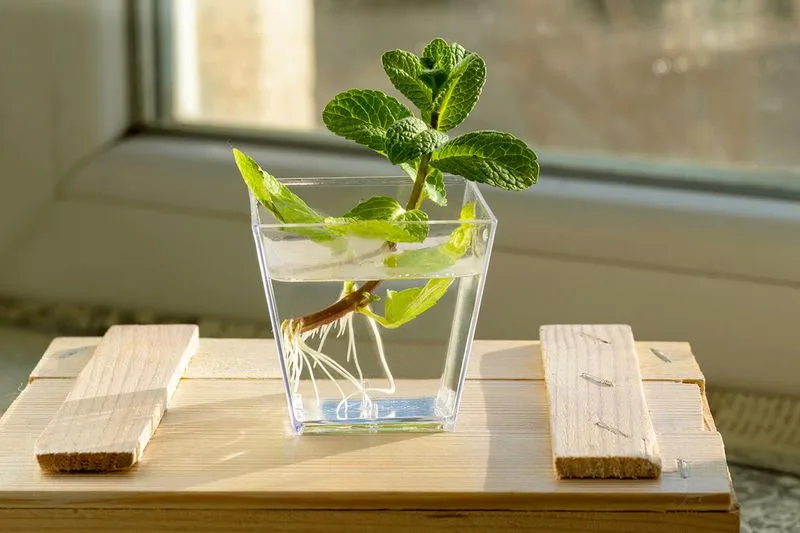
With its refreshing scent, mint is a delightful addition to any garden. Submerge cuttings in water until roots form, then transfer to soil. This process ensures a constant supply of mint for teas or garnishes. The fragrance alone can uplift any space. Easy to grow, it requires little maintenance, making it a favorite among herb enthusiasts. Place it where it can receive plenty of sunlight. Mint’s versatility makes it a must-have for any kitchen garden.
Onion
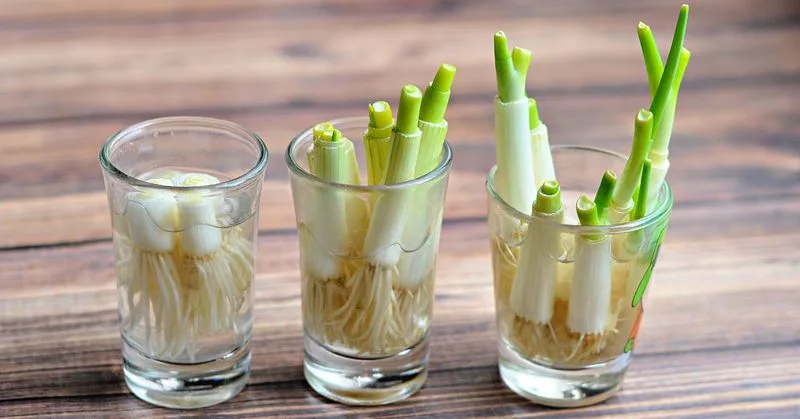
Onions are a staple in many kitchens, and they can easily regrow from scraps. Plant the bottom section in soil, and soon you’ll see green shoots. These shoots can be harvested for cooking or left to grow into a new onion. It’s a sustainable way to keep your kitchen stocked with fresh onions. Ensure they have access to sunlight and water to flourish. This project is ideal for those looking to reduce waste while enjoying fresh produce.

